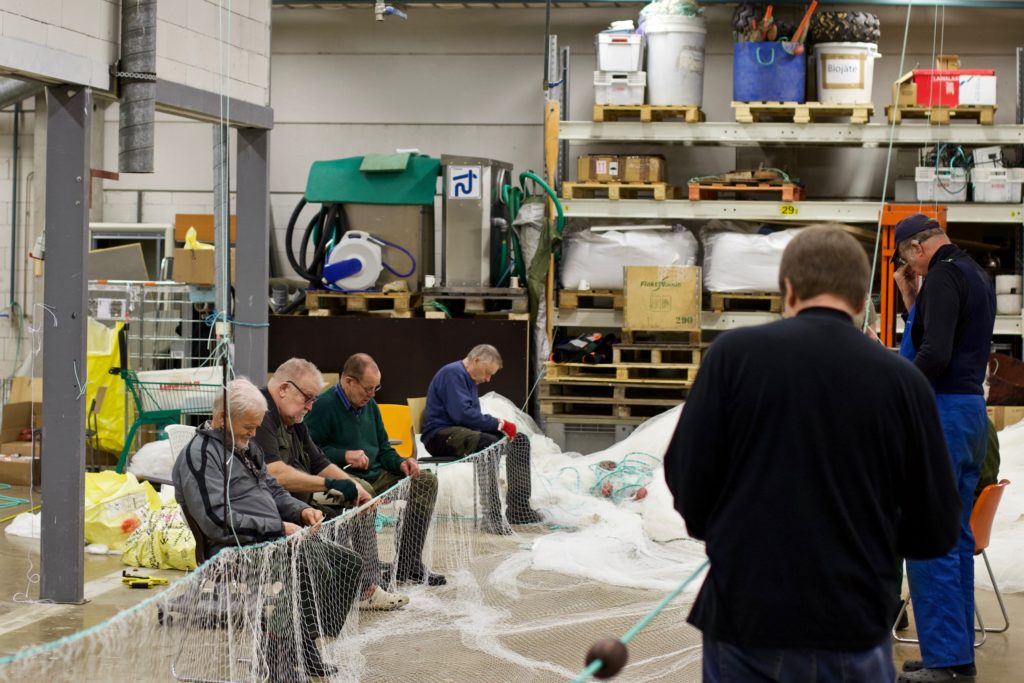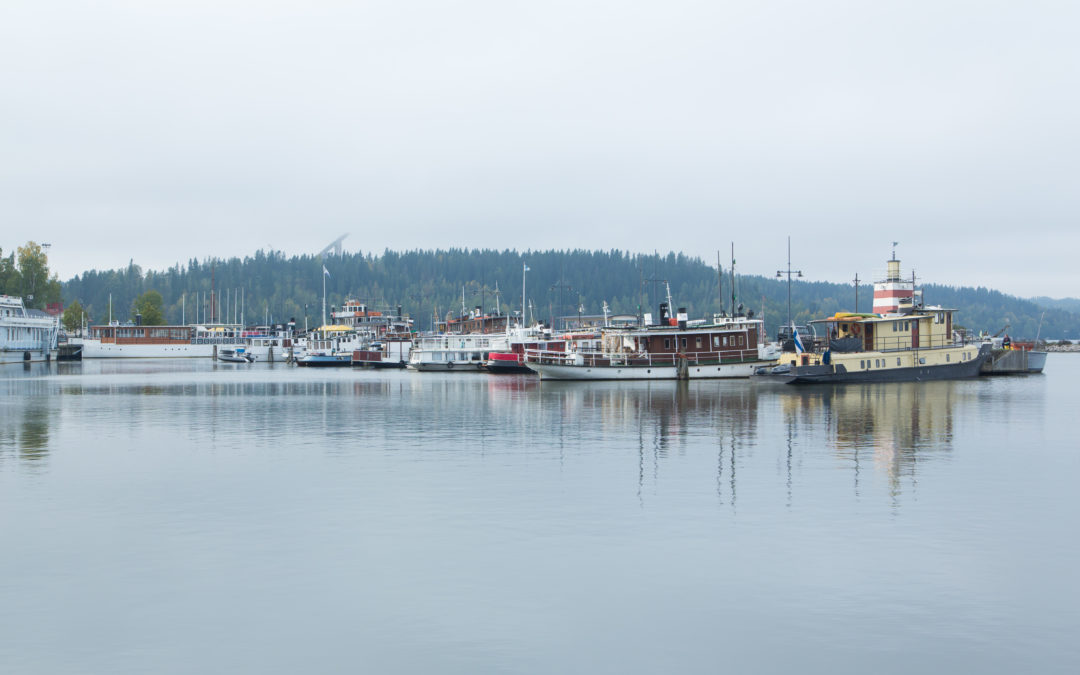The network that manages Lake Vesijärvi includes, besides the City of Lahti, the research community that is doing important work. This community consists of the University of Helsinki, Natural Resources Institute Finland (Luke, and the organisations that were merged to create it) and the Finnish Environment Institute. The fishing communities were committed to management fishing right from the start, and have also kept up the volunteering work for more than 30 years. The water management would not have got anywhere without the commitment and input by the water and land owners.
Once the Lake Vesijärvi Foundation was established, the local businesses have also become involved, including many artists, for example, that have contributed their expertise in fundraising. The Lake Vesijärvi Foundation also welcomes sponsors to enable locals to contribute to the lake’s management.
The local media has become committed, creating visibility and greater impact for the water management.

Research and monitoring
The Lake Vesijärvi Foundation supports research into Lake Vesijärvi and other water bodies in the Lahti region by awarding grants and aid and by maintaining scientific research cooperation with national and international communities. The Foundation’s own resources for supporting extensive research are rather limited, so the focus is on assessing the basis and impact of management measures. Effective, long-term water management requires systematic monitoring and analysis of measures and their impact in order that the range and intensity of measures can be adjusted if necessary.
The long-term funding of water management by the Lake Vesijärvi Foundation may provide new avenues for research for the testing of new management methods, for example. In recent years, the research has focused on the operation of the Lake Vesijärvi food web and the dynamics of internal load. The objective with the study of internal load has been to determine the options for dealing with the Lake Vesijärvi hypolimnion and sediment as part of the lake’s overall management. It has also been studied how phosphorus rises from the deep basins during the autumn overturn to shallow areas. Understanding this will help to understand the operation of the entire lake basin and to assess the suitability and impact of various restoration methods.
The Lake Vesijärvi Foundation has at its disposal a group of Finnish experts in water ecosystems, usually meeting twice a year to discuss water management issues in the Lahti region.
The Foundation’s partners include the University of Helsinki, University of Jyväskylä, University of Turku, Finnish Environment Institute, Natural Resources Institute Finland, KTH Royal Institute of Technology in Sweden, and University of Warmia and Mazury in Olsztyn in Poland. In addition to this, a cooperation network has sprung up around the Lahti Lakes research symposium that is organised by the Lake Vesijärvi Foundation and the University of Helsinki every three years.
A good basis for restoration research and management planning is provided by exceptionally extensive and long-term water body monitoring. The status and load of Lake Vesijärvi is monitored by several parties more widely than for any other major lake in Finland. The monitoring includes the lake’s hydrology, water chemistry and biology. The status of Lake Vesijärvi is being monitored every year by:
- Automated monitoring stations
- Water samples for water quality parameters
- Chlorophyll and phytoplankton samples
- Zooplankton samples
- Echo sounding of pelagic smelt population
- Test fishing with standard multimesh gillnets
- Water samples from incoming streams to monitor nutrient load
In addition, more than twenty smaller lakes in the Lahti region and their tributaries are monitored regularly. All monitoring material concerning Lake Vesijärvi and the smaller water bodies is stored in the Lake Vesijärvi Foundation’s EMMI data service, which is available for free for researches upon application. Based on the monitoring material for the past year, a report on the status of Lake Vesijärvi is published annually on World Water Day in March.
Management actions
The single most important action in the management of Lake Vesijärvi was the new water treatment plant built in 1976. The sewage load from the City of Lahti was diverted elsewhere from the lake. During 1980s, industrial plants stopped operating on the shores of Lake Vesijärvi. Still, the cyanobacterial blooms continued, as the excessive roach population caused heavy internal nutrient loading. Pioneering work was done on Lake Vesijärvi in terms of biomanipulation of a large lake. More than a million kilos of fish, largely roach and smelt, was removed from the lake between 1989and 1993, amounting to about 500 kg/ha. At the same time, over a million young pike-perch were stocked in the lake. As a result, cyanobacterial blooms decreased significantly. The work for Lake Vesijärvi is still ongoing. Management measures are also carried out in several smaller lakes.
Management fishing
Efficient fishing of Lake Vesijärvi has continued as management fishing every year. Management fishing is done with seine and fish traps in winter, fyke nets in spring, and seine in autumn. The annual fish catch has varied between 50,000 and 250,000 kilos. Management fishing has been done by voluntary work, professional fishermen and by employees of the City of Lahti. Seine fishing is an annual management action in Lake Kymijärvi as well. There, the work has been done by the City of Lahti and Nastolan Osakaskunnat ry, which also fish in several other lakes in Nastola region. In Hollola, management fishing with fish traps has been done in Lake Vähä-Tiilijärvi and in Lake Kutajärvi.
One unique tradition and significant joint effort in Lahti region consists of the annual voluntary working weeks for building and repairing management fishing gears. Volunteers have gathered to work together with gears already over 30 years.
Artificial oxygenation
The southernmost basin of Lake Vesijärvi, Enonselkä, was treated with 9 Mixox pumps during stratification periods in summer and winter in 2010–2017 and with 4 pumps during the winter of 2018–2019. The maximum water volume pumped to the hypolimnion with nine pumps was 8,000 l/s and the estimated transport of dissolved oxygen was 6,500 kg/day. The oxygenation stabilised deepwater nutrient concentrations to a low level, but this was not reflected in the epilimnetic total nutrient concentration or in a further decrease in the chlorophyll concentration.
Summer and winter mowing
Summer mowing of reed and other aquatic plants is an annual management activity in Lake Vesijärvi and in some other smaller lakes too. Winter mowing of reed beds has been done if allowed by ice conditions. The purpose of mowing is to prevent overgrowth of bays and to keep boat and swimming shores open.
Water protection measures in agriculture
To decrease the agricultural nutrient loading, several measures have been done in the catchment of Lake Vesijärvi, such as establishment of buffer zones, building of two-stage ditches, bottom dam series, or wetland and sedimentation ponds. There are over 30 wetland or sedimentation ponds in the catchment area of Lake Vesijärvi, which are monitored and maintained regularly. In addition, comprehensive water management projects have been implemented to activate farmers to improve field cultivation methods and soil growth conditions.
Reduction of stormwater load
Stormwater runoff from urbanised areas is a significant source of surface water pollution. In recent years, Lahti has built comprehensive systems for urban storm water management. Urban wetlands, infiltration basins and green roofs are utilised for storm water management together with traditional conveyance-based solutions. A large-scale bio-infiltration pilot was constructed in the Hennala area in Lahti in 2018. The pilot project utilises new infiltration materials to purify stormwaters transferred from Lahti’s city centre. Since 2020, about 30% of the stormwaters accumulating in the city centre has been transferred to Hennala, away from Lake Vesijärvi. In addition, well filters have been tested in the city area since 2022. Filters can retain dirt and nutrients bound to solid particles.
Closed-circuit hypolimnetic withdrawal
In Lake Kymijärvi, a unique restoration method has been tested, in which hypolimnetic, nutrient-rich water withdrawn from the Myllypohja deep is treated for phosphorus removal by a precipitation and filtration-based treatment unit, and subsequently led back into the surface of the lake via a wetland. The results exemplify how the accumulation of phosphorus in the near-bottom water of eutrophic lakes is so substantial that adjusting hypolimnetic withdrawal to the diffusive flux of sedimentary phosphorus has potential to increase the annual phosphorus output from the system considerably without causing unintended disturbances to the thermal stratification of the lake.

